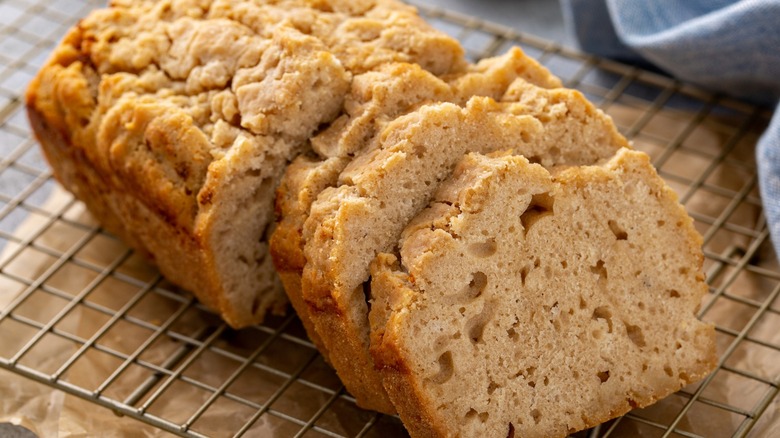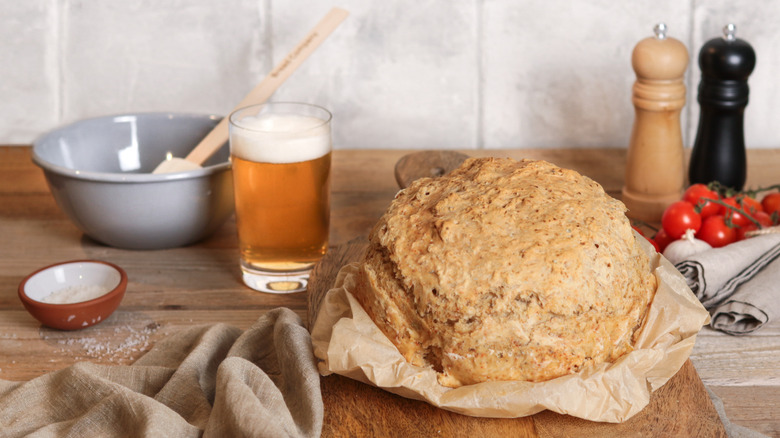No, Your Beer Bread Doesn't Need To Rise. Here's Why
Those who have some baking experience at home know that yeast is often the key to perfectly fluffy bread. There are, however, some types of bread that don't require it and that includes beer bread, a cousin to soda bread. But how do breads such as these accomplish this feat? In the case of beer bread, the secret lies within the brew itself.
Beer, with its effervescent bubbles and complex flavors, serves as a natural leavening agent for bread. These bubbles, formed during the fermentation process, create pockets of carbon dioxide that aerate the dough, causing it to rise. It's a beautifully symbiotic relationship. The yeast in the beer, along with its sugars, interact with the other ingredients in the bread, producing a light and airy texture without the need for additional yeast.
Some recipes, like this one for Irish beer bread, also call for the addition of baking powder, further enhancing the rise and ensuring a consistent texture. This combination of beer and baking powder is like a one-two punch of leavening power, resulting in a perfect loaf with a lofty rise every time. And, in case you're worried, the beer's alcohol burns off during baking, so the finished bread is perfectly safe for all ages to eat.
Leaving out yeast results in faster prep
One of the most enticing aspects of beer bread is its simplicity. Without the need to wait for yeast to activate, the prep time is reduced, making it an ideal option for busy bakers or last-minute gatherings. In just a matter of minutes, you can have a batch of dough ready to pop into the oven, filling your home with the irresistible aroma of freshly baked bread. But to achieve the best rise for your beer bread, there are a few tips to keep in mind.
First, choose a room-temperature beer with a flavor profile that complements the other ingredients in your recipe. For example, Tasting Table recipe developer Jessica Morone chose a Budweiser lager for our cheddar beer bread recipe. Whether you prefer a light and crisp lager or a rich and malty stout, the beer you select will impart its unique characteristics to the final product. Also, be mindful of the consistency of your dough. It should be slightly sticky but still manageable. If it's too dry, the bread may not rise as well, resulting in a denser texture. Conversely, if it's too wet, the loaf may collapse during baking.
Lastly, resist the urge to overmix the dough. Unlike traditional bread recipes that benefit from intense kneading to develop gluten, beer bread is best when handled gently. Mix the ingredients just until they come together, then transfer the dough to your baking dish and let the beer work its magic. With its effortless charm, it's no wonder that this unconventional loaf has captured the hearts and taste buds of bakers everywhere. So, raise a glass (and a slice) to the delightful alchemy of beer bread.

